BMPR2
-
Official Full Name
bone morphogenetic protein receptor, type II (serine/threonine kinase) -
Overview
BMPR2 is a type II serine/threonine receptor kinase that binds to an array of secreted bone morphogenetic proteins (BMPs). BMPs belong to the superfamily of TGF-beta ligands that modulate gastrulation, neurogenesis, chondrogenesis, interdigital cell death -
Synonyms
BMPR2;bone morphogenetic protein receptor, type II (serine/threonine kinase);PPH1, primary pulmonary hypertension 1;bone morphogenetic protein receptor type-2;BMPR II;BMPR3;BRK 3;T ALK;BMPR-2;BMP type-2 receptor;BMP type II receptor;type II ac
Recombinant Proteins
- Human
- Chicken
- Mouse
- Rhesus macaque
- E.coli
- HEK293
- Sf9 Cells
- Human Cells
- Mammalian Cells
- Sf21 Cells
- Wheat Germ
- His
- Fc
- GST
- T7
- Non
- Avi
- DDK
- Myc
Background
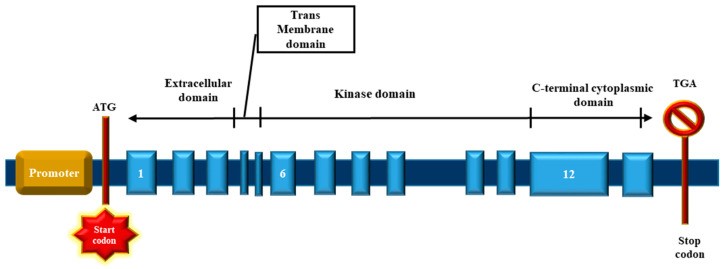
Fig1. Diagrammatic representation of BMPR2 gene. (Anichavezhi Devendran, 2022)
What is BMPR2 protein?
BMPR2 (bone morphogenetic protein receptor type 2) gene is a protein coding gene which situated on the long arm of chromosome 2 at locus 2q33. This gene encodes a member of the bone morphogenetic protein (BMP) receptor family of transmembrane serine/threonine kinases. The ligands of this receptor are members of the TGF-beta superfamily. BMPs are involved in endochondral bone formation and embryogenesis. These proteins transduce their signals through the formation of heteromeric complexes of two different types of serine (threonine) kinase receptors: type I receptors of about 50-55 kD and type II receptors of about 70-80 kD. The BMPR2 protein is consisted of 1038 amino acids and its molecular mass is approximately 115.2 kDa.
What is the function of BMPR2 protein?
BMPR2 regulates cell cycle, inhibits cell proliferation, promotes cell differentiation, and maintains tissue homeostasis. BMPR2 plays a key role in bone development, promoting the differentiation of osteoblasts and chondrocytes, thereby affecting bone formation and growth. BMPR2 is involved in regulating the proliferation and migration of vascular endothelial cells and plays an important role in angiogenesis. BMPR2 can inhibit inflammatory response and reduce inflammatory damage.
BMPR2 Related Signaling Pathway
BMPR2 is a cell surface receptor of transforming growth factor β (TGF-β) superfamily, which is mainly involved in TGF-β, Activin, bone morphogenetic proteins (BMPs) and other signaling pathways. These pathways play a key role in regulating cell proliferation, differentiation, migration, apoptosis, embryonic development and tissue repair. By binding to different ligands, BMPR2 is able to activate MAD dependent or independent signaling pathways, thereby regulating target gene expression and cell function. For example, in the BMP signaling pathway, after the BMP ligand binds to BMPR2, it will prompt it to bind to another receptor BMPR1, and then phosphorylate BMPR1, further activate SMAD protein, and ultimately affect gene transcription.
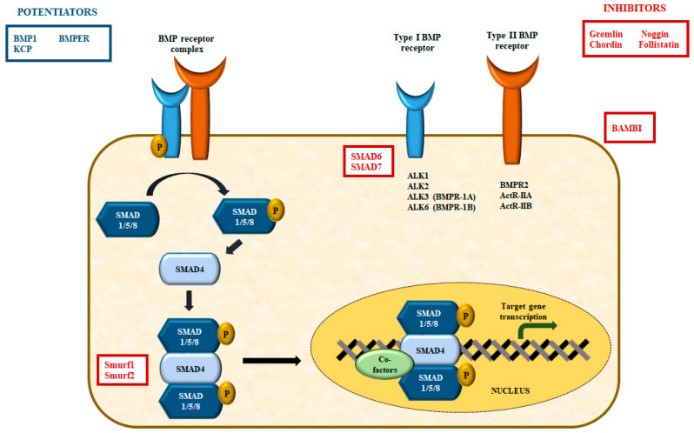
Fig2. Summary of bone morphogenetic protein receptor signal transduction pathway. (Anichavezhi Devendran, 2022)
BMPR2 Related Diseases
BMPR2 protein is an important signal transduction molecule involved in a variety of biological processes, including cell proliferation, differentiation, apoptosis and angiogenesis. Mutations in the BMPR2 gene are associated with a variety of diseases, especially the occurrence of hereditary pulmonary hypertension (PAH). PAH is a rare but serious disease characterized by abnormal proliferation and apoptosis of pulmonary artery endothelial cells and smooth muscle cells, leading to narrowing of the pulmonary artery lumen and increased pulmonary vascular resistance, ultimately leading to right heart failure and death. In addition to PAH, BMPR2 gene mutations are also associated with other diseases such as congenital heart disease, kidney disease, and tumors.
Bioapplications of BMPR2
Studying the function and regulatory mechanism of BMPR2 and developing drugs targeting the BMPR2 signaling pathway have become important strategies for the treatment of PAH. In addition, studies have shown that BMPR2 also plays an important role in the occurrence and development of other diseases such as tumors and fibrotic diseases, which provides the possibility for the clinical application of BMPR2 in these diseases.
Case Study
Case Study 1: Laia Bonjoch, 2023
Colorectal cancer (CRC) is one of the most prevalent tumors worldwide, with incidence quickly increasing (particularly in the context of early-onset cases), despite important prevention efforts, mainly in the form of population-wide screening programs. Although many cases present a clear familial component, the current list of hereditary CRC genes leaves a considerable proportion of the cases unexplained. In this work, the whole-exome sequencing approaches were used on 19 unrelated patients with unexplained colonic polyposis to identify candidate CRC predisposition genes. The candidate genes were then validated in an additional series of 365 patients. CRISPR-Cas9 models were used to validate BMPR2 as a potential candidate for CRC risk. 8 individuals carrying 6 different variants in the BMPR2 gene. CRISPR-Cas9 models of 3 of these variants showed that the p.(Asn442Thrfs∗32) truncating variant completely abrogated BMP pathway function in a similar way to the BMPR2 knockout.
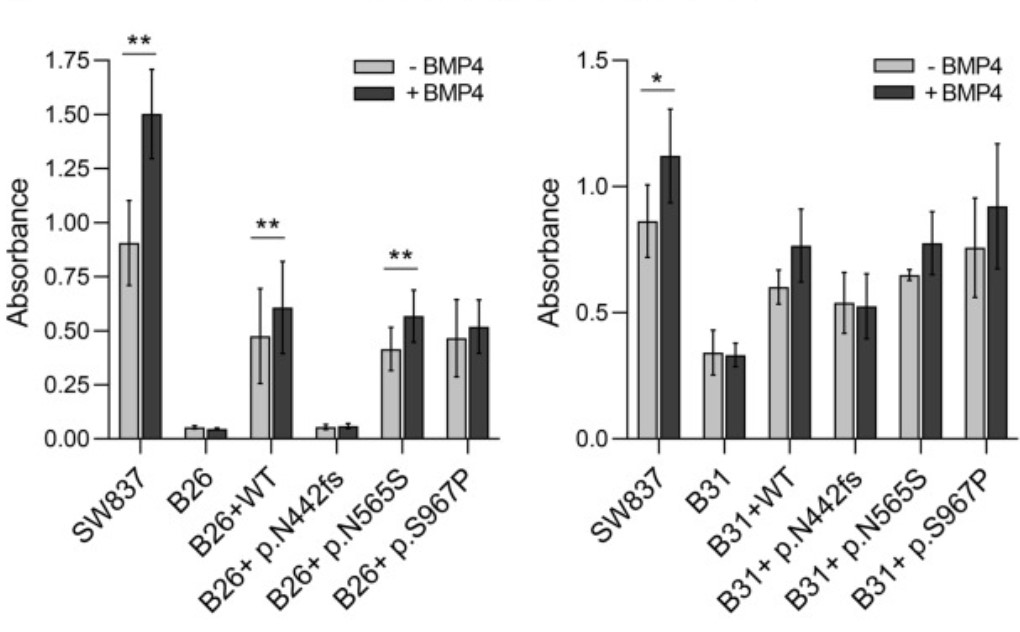
Fig1. Quantitative analysis of the phosphorylated levels of SMAD1 (Ser463/465) by means of enzyme-linked immunosorbent assay in the presence or absence of 50 ng/mL of BMP4.
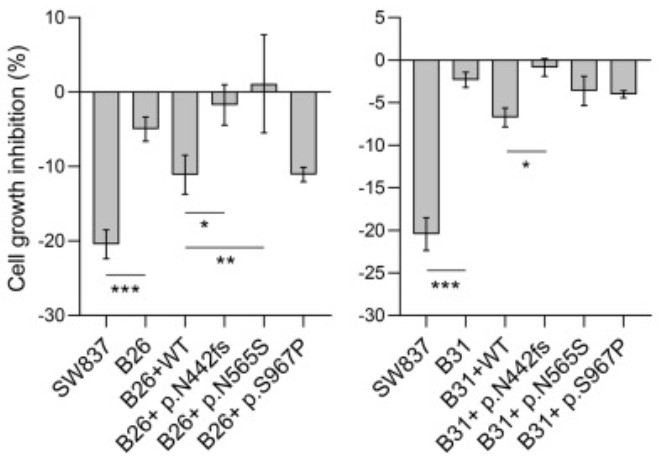
Case Study 2: Arindam Mondal, 2021
Recent studies have shown that bone morphogenetic protein receptor 2 (BMPR2) regulates cell survival signaling events in cancer cells independent of the BMP type 1 receptor (BMPR1) or the Smad-1/5 transcription factor. Mutations in BMPR2 trafficking proteins leads to overactive BMP signaling, which leads to neurological diseases caused by BMPR2 stabilization of the microtubules. It is not known whether BMPR2 regulates the microtubules in cancer cells and what effect this has on cell survival. It is also not known whether alterations in BMPR2 trafficking effects activity and response to BMPR2 inhibitors. The researchers utilized BMPR2 siRNA and the BMP receptor inhibitors JL5 and Ym155, which decrease BMPR2 signaling and cause its mislocalization to the cytoplasm. Using the JL5 resistant MDA-MD-468 cell line and sensitive lung cancer cell lines, they examined the effects of BMPR2 inhibition on BMPR2 mislocalization to the cytoplasm, microtubule destabilization, lysosome activation and cell survival. Activated lysosomes further decreases BMPR2 signaling by causing it to mislocalizated to the cytoplasm and/or lysosome for degradation. Inhibition of the lysosomes with chloroquine attenuates BMPR2 trafficking to the lysosome and cell death induced by BMPR2 inhibitors.
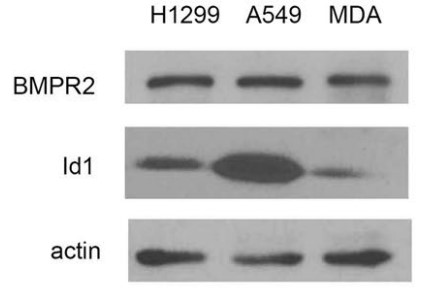
Fig3. Immunoblot for BMPR2 of untreated cell lines.
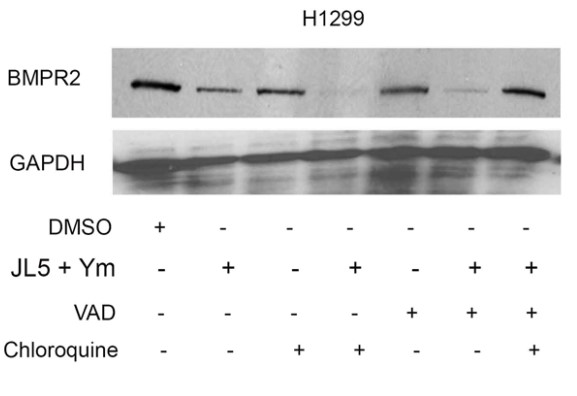
Quality Guarantee
High Purity
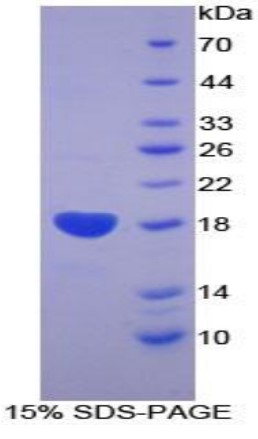
Fig1. SDS-PAGE (BMPR2-577H) (PROTOCOL for western blot)
.
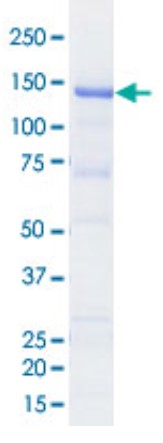
Fig2. SDS-PAGE (BMPR2-287H) (PROTOCOL for western blot)
Involved Pathway
BMPR2 involved in several pathways and played different roles in them. We selected most pathways BMPR2 participated on our site, such as Cytokine-cytokine receptor interaction,TGF-beta signaling pathway,Hippo signaling pathway, which may be useful for your reference. Also, other proteins which involved in the same pathway with BMPR2 were listed below. Creative BioMart supplied nearly all the proteins listed, you can search them on our site.
| Pathway Name | Pathway Related Protein |
|---|---|
| TGF-beta signaling pathway | ZFYVE9,SMAD3,ACVR1BA,NBL1,CHD,ID2,TGIF1,RHOA,BMP2,ACVR2AA |
| Cytokine-cytokine receptor interaction | IFNK,CXCL14,IFNB1,INHBE,ACVR1BA,CD70,IL21R,PRLR,PF4,Ifnlr1 |
| Signaling pathways regulating pluripotency of stem cells | APC,NANOG,ONECUT1,IL6ST,ACVR2B,INHBB,FZD6,HRAS,WNT2,SMAD3 |
| MicroRNAs in cancer | HMGA2,NOTCH1,CCND2,EP300,SPRY2,NOTCH3,TRP53,PDGFRA,SLC7A1,FSCN1 |
| Hippo signaling pathway | SCRIB,PPP2R2D,RASSF1,ID1,PPP2R2A,CRB1,STK3,AFP,PPP1CB,WNT5B |
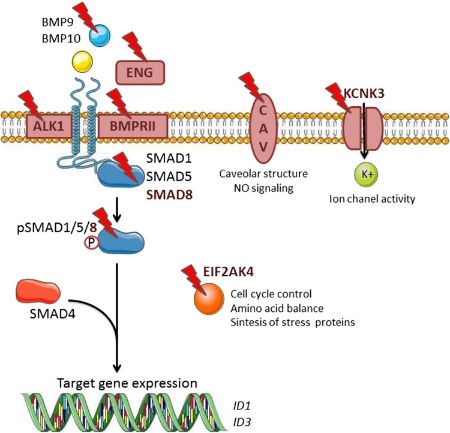
Fig1. MP signaling in endothelial cells. (Mar Orriols, 2017)
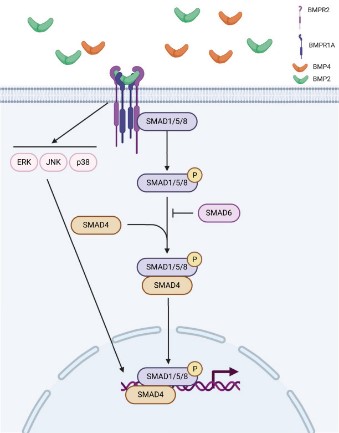
Fig2. The BMP pathway in the colon. (Laia Bonjoch, 2023)
Protein Function
BMPR2 has several biochemical functions, for example, ATP binding,BMP binding,activin receptor activity, type II. Some of the functions are cooperated with other proteins, some of the functions could acted by BMPR2 itself. We selected most functions BMPR2 had, and list some proteins which have the same functions with BMPR2. You can find most of the proteins on our site.
| Function | Related Protein |
|---|---|
| receptor signaling protein serine/threonine kinase activity | ACVR1,TGFBR2,BMPR1AA,STK39,ACVRL1,STK26,BMPR1BB,ACVR1BA,BMPR1A,ACVR2B |
| protein binding | HSPA13,DDX39B,SRI,ROPN1,APPL2,MTMR6,DULLARD,SLC39A7,DNMT1,SMARCD3 |
| metal ion binding | NT5C2L1,MEP1A.2,CAT,ZNF474,ACVRL1,COL27A1B,HBAE1,FBXO30A,BCL11A,RPS6KAL |
| BMP binding | TCAP,NBL1,GREM2,CER1,GDF5,HFE2,GREM1 |
| ATP binding | VPS4A,CDKL5,TRIB3,UBE2L3,MAPKAPK2,ADRBK2,ATAD5,UBE2IA,UBE1Y1,AAK1 |
| growth factor binding | RHBDF2,KDR,NKD2,IGFBP2B,GHRHR,NRP2,FLT4,LIFR,A2M,TEK |
Interacting Protein
BMPR2 has direct interactions with proteins and molecules. Those interactions were detected by several methods such as yeast two hybrid, co-IP, pull-down and so on. We selected proteins and molecules interacted with BMPR2 here. Most of them are supplied by our site. Hope this information will be useful for your research of BMPR2.
PRKG1;C4bpa;Prkcb;GDF5;MAPK8;Bmpr2;Ctbp1;Mos;Serpina3k;Lsp1;Cryab
Resources
Gene Families
Research Area
Related Services
Related Products
References
- Guignabert, C; Dorfmuller, P; et al. Pathology and Pathobiology of Pulmonary Hypertension. SEMINARS IN RESPIRATORY AND CRITICAL CARE MEDICINE 34:551-559(2013).
- Yu, J; Taylor, L; et al. Altered expression and signal transduction of endothelin-1 receptors in heritable and idiopathic pulmonary arterial hypertension. JOURNAL OF CELLULAR PHYSIOLOGY 228:322-329(2013).



